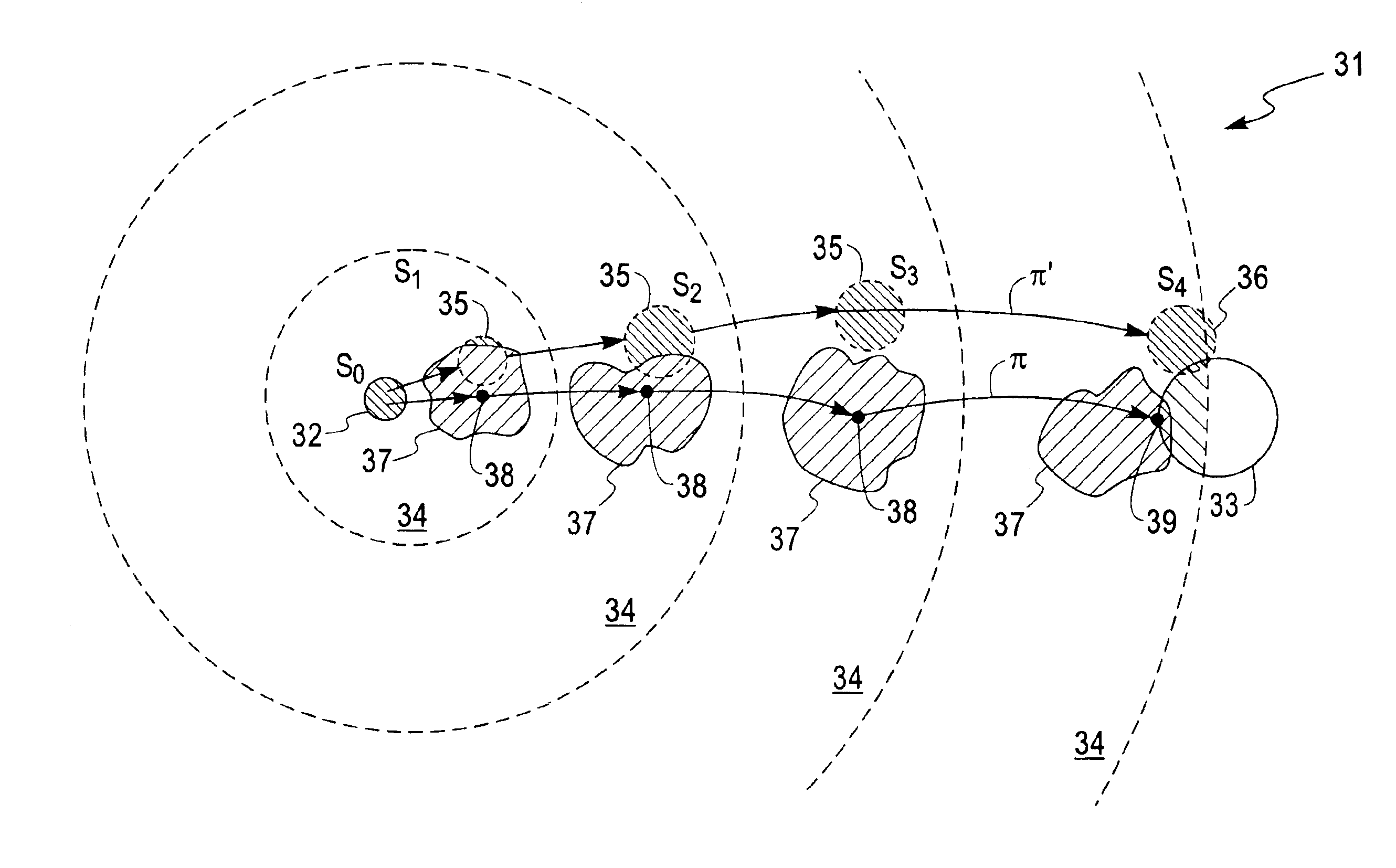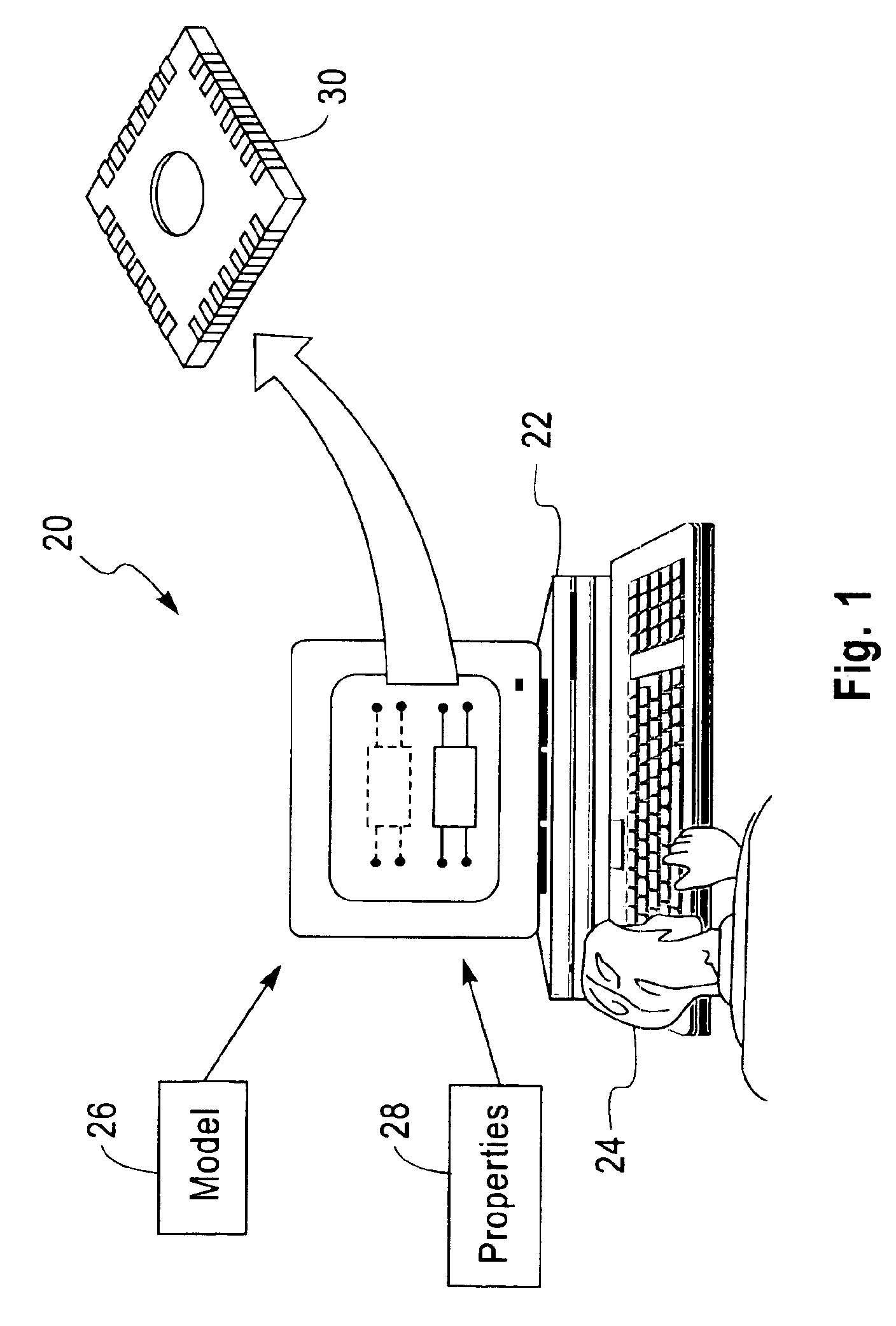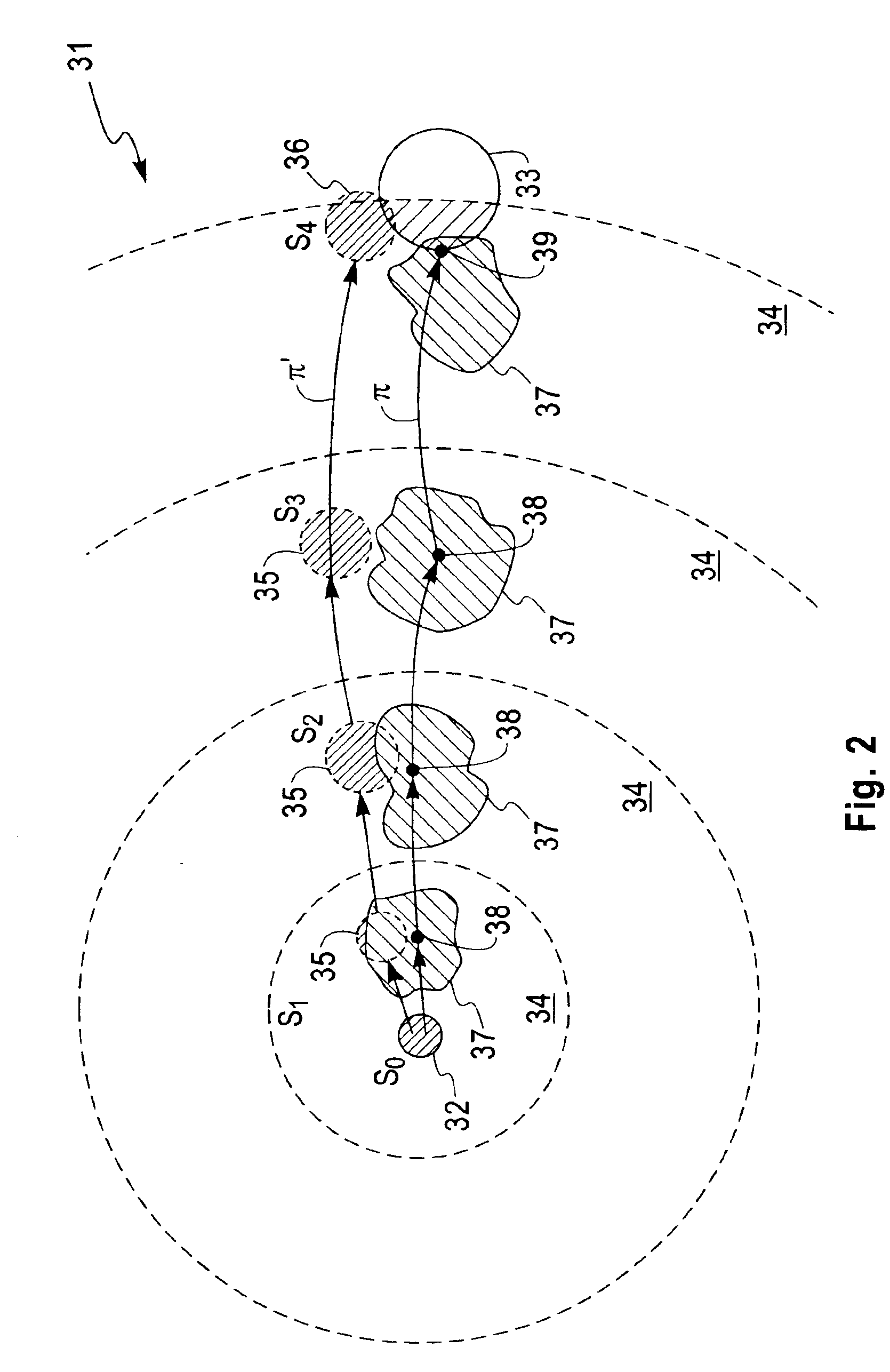Model checking with layered localization reduction
a layer localization and model technology, applied in the field of design automation and verification, can solve the problems of large model tr, inability to know whether a counterexample exists in the complete model, and inability to compute full tr, so as to reduce the likelihood of state space explosion and reduce computation. the effect of substantial computation
- Summary
- Abstract
- Description
- Claims
- Application Information
AI Technical Summary
Benefits of technology
Problems solved by technology
Method used
Image
Examples
Embodiment Construction
System and Method Overview
[0057]FIG. 1 is a schematic pictorial illustration of apparatus 20 for symbolic model checking, in accordance with a preferred embodiment of the present invention. Apparatus 20 typically comprises a model processor 22, typically a general-purpose computer workstation running suitable model checking software. The system is operated by a user 24, typically a design or verification engineer. The model checking software may be downloaded to processor 22 in electronic form, over a network, for example, or it may be supplied on tangible media, such as CD-ROM or non-volatile memory. Processor 22 receives a hardware implementation model 26 of a target system or device 30 in development, which may refer to the entire system or device or to a sub-unit, such as a circuit or functional block. User 24 prepares a path specification 28, comprising properties for use in model checking of model 26, and selects initial states of the model. System 20 analyzes the model, using...
PUM
 Login to View More
Login to View More Abstract
Description
Claims
Application Information
 Login to View More
Login to View More - R&D
- Intellectual Property
- Life Sciences
- Materials
- Tech Scout
- Unparalleled Data Quality
- Higher Quality Content
- 60% Fewer Hallucinations
Browse by: Latest US Patents, China's latest patents, Technical Efficacy Thesaurus, Application Domain, Technology Topic, Popular Technical Reports.
© 2025 PatSnap. All rights reserved.Legal|Privacy policy|Modern Slavery Act Transparency Statement|Sitemap|About US| Contact US: help@patsnap.com



